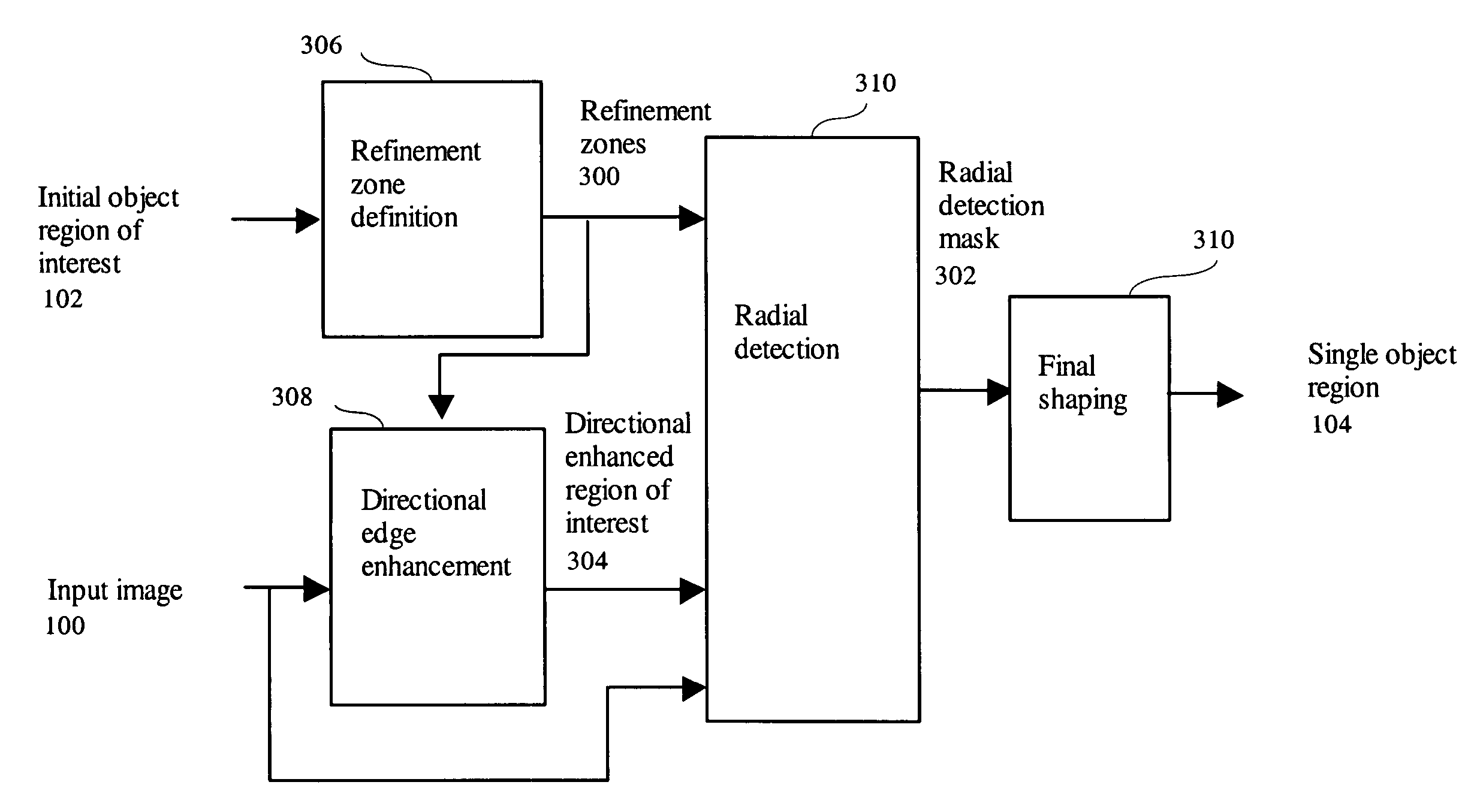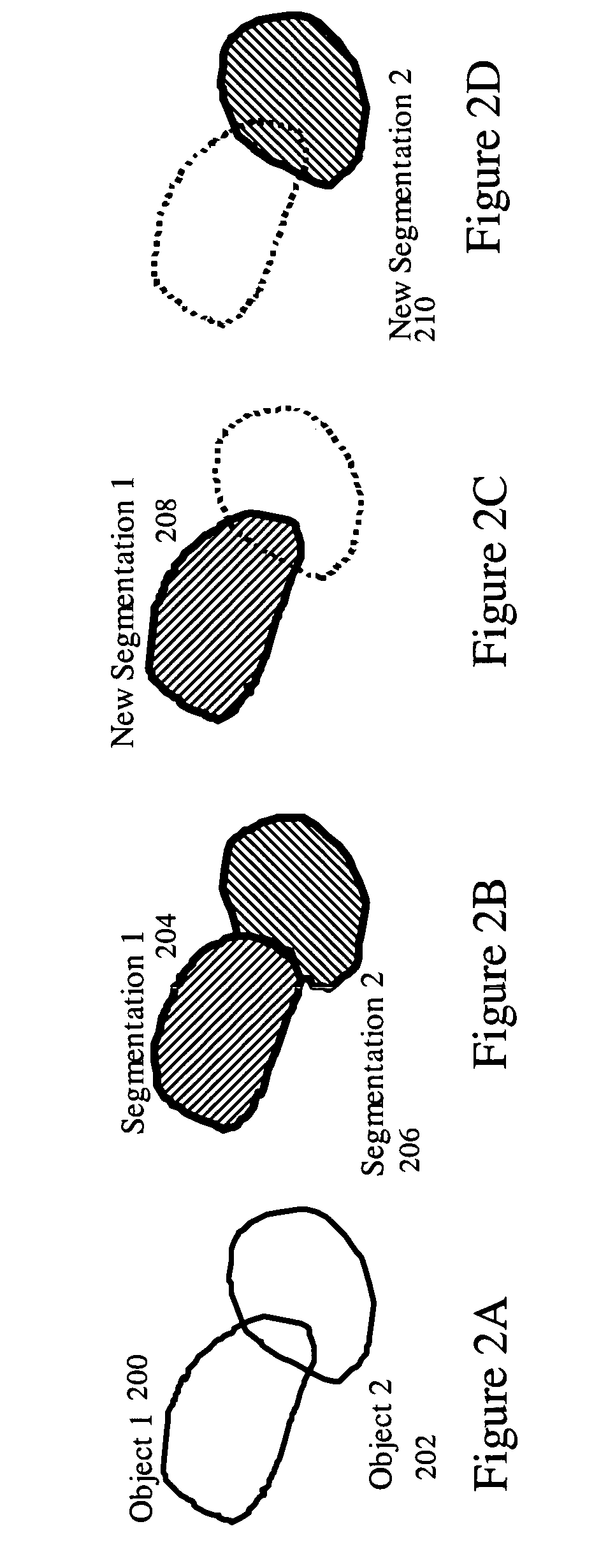Object based boundary refinement method
a boundary refinement and object technology, applied in image enhancement, image analysis, instruments, etc., can solve the problems of difficult to specify what constitutes an object of interest in an image, difficult to enforce the above rules, and erroneous analysis and conclusions drawn based on incorrect measurements. achieve the effect of simple initial detection, high-quality object segmentation masks, and fast processing
- Summary
- Abstract
- Description
- Claims
- Application Information
AI Technical Summary
Benefits of technology
Problems solved by technology
Method used
Image
Examples
Embodiment Construction
I. Application Scenario
[0033]The processing flow for the application scenario of the object based boundary refinement method is shown in FIG. 1. It includes two steps. The first step, initial object region of interest generation 106, generates a single initial object region of interest 102 from the input image 100. The second step, object based boundary refinement 108, performs one object of interest boundary refinement within the single initial object region of interest 102. This results in single object region 104 output.
[0034]As shown in FIG. 1, the input image 100 is processed by the initial object region of interest generation 106 step for single initial object region of interest 102 generation. The single initial object region of interest 102 could be generated automatically using methods such as initial detection followed by region partition (Shih-Jong J. Lee, Tuan Phan, “Method for Adaptive Image Region Partition and Morphologic Processing”, U.S. patent application Ser. No. ...
PUM
 Login to View More
Login to View More Abstract
Description
Claims
Application Information
 Login to View More
Login to View More - R&D
- Intellectual Property
- Life Sciences
- Materials
- Tech Scout
- Unparalleled Data Quality
- Higher Quality Content
- 60% Fewer Hallucinations
Browse by: Latest US Patents, China's latest patents, Technical Efficacy Thesaurus, Application Domain, Technology Topic, Popular Technical Reports.
© 2025 PatSnap. All rights reserved.Legal|Privacy policy|Modern Slavery Act Transparency Statement|Sitemap|About US| Contact US: help@patsnap.com



